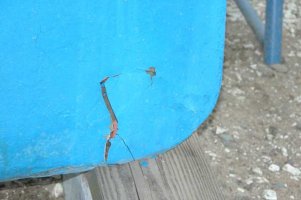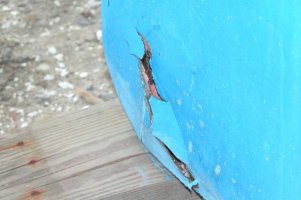I arrived at the boat yard this weekend, only to discover that when the yard moved my boat, the lower aft corner of the keel crumbled. The yard is claiming a weak keel. Based on the two photos attached, I don't think I can argue.
I plan on using Don Caseys book as a reference. My questions are:
Is this a relatively easy Fiberglass repair? (just grind and fill)
In the early E29s (mine is a 71, hull number 54), does the lead fill the entire keel?
If this section does not have lead, could I just cut the corner and glass over the remaining edge?
thanks for any help,
Dave
I plan on using Don Caseys book as a reference. My questions are:
Is this a relatively easy Fiberglass repair? (just grind and fill)
In the early E29s (mine is a 71, hull number 54), does the lead fill the entire keel?
If this section does not have lead, could I just cut the corner and glass over the remaining edge?
thanks for any help,
Dave



